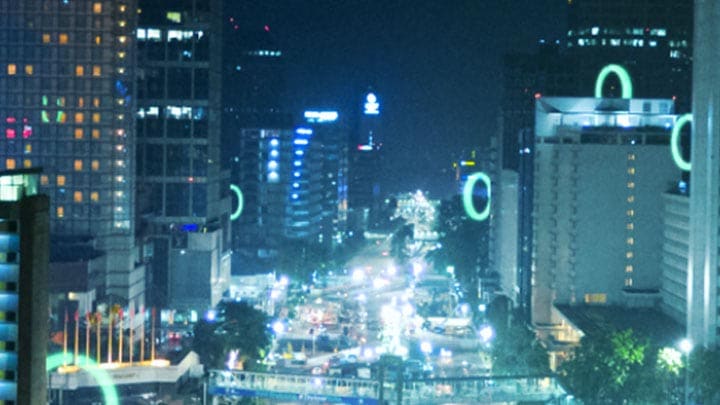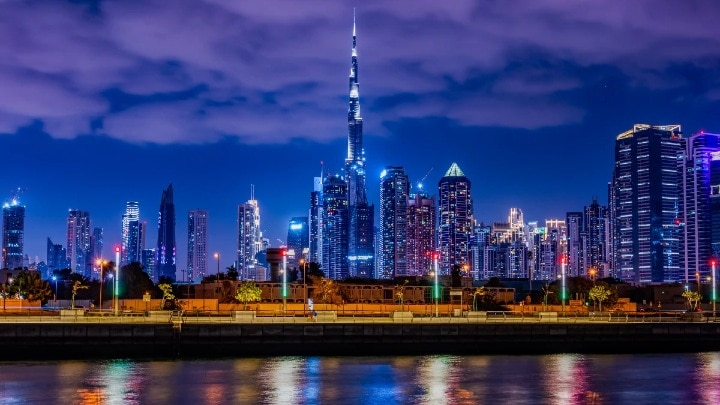30th March, 2022
At COP26, held in Glasgow in November 2021, governments and businesses made many promises and commitments to reduce emissions, scale up sustainability efforts, and achieve net zero. But to really gain momentum, action must follow.
To make the ambition viable, building owners must achieve net zero carbon and zero energy buildings while maintaining or increasing the quality of life for the people who work and live in them. Energy-efficiency retrofits are crucial here, but they take time—and time is running out. This is where lighting comes in.
Upgrading conventional light points to LED, replacing standard street lights with connected street lights and smart poles, putting the lighting system under smart management: changes such as these are much faster and less invasive than changes to HVAC and water systems. Not that buildings renovations shouldn’t include these energy-saving techniques—they should—but the switch to managed, connected LED can increase energy efficiency, lower costs, and reduce carbon emissions now.
LEDs typically produce useful light at least 15 times longer—30,000+ hours of burn time before replacement, as opposed to 2,000 hours—and consume up to 80% less energy than their conventional counterparts. The longer life of LEDs drives savings all along the product lifecycle: savings on materials when manufacturing lighting products that last much longer, savings on installation costs for systems that will run for 10 years or more, savings on maintenance and replacement costs with light points that don’t fail or burn out, and significantly reducing the electricity demand during operations.
“LEDs are one of the quickest renovations that dramatically cut carbon—it does not require large capital investments and has a short payback time.” said Stephen Rouatt, CEO of Signify in UK&I.
According to the US Department of Energy, lighting accounts for 15% of global electricity consumption and 5% of worldwide greenhouse gas emissions. A wholesale shift to LEDs could reduce CO2 emissions by 800 million metric tons per year—equivalent to shutting down 684 coal-fired power plants. Annual cost savings would run to US$26 billion in the US alone.
The advantages of shifting to LED lighting doesn’t stop there. Connected lighting systems can help people lead smarter, happier, and healthier lives, while having far less impact on the planet than conventional lighting.
In cities, smart poles can serve as vertical assets that can be used for delivering smart city and IoT capabilities throughout urban neighborhoods. Smart poles can house integrate 4G/5G connectivity, and can house public broadband access points, security cameras, microphones, sensors, digital billboards, EV charging ports, and other smart devices. All of these contribute to enhanced connectivity, safety, and livability in cities and towns of all sizes.
In offices, LED-based artificial skylights can mimic the rhythm of daylight and simulate nature to support human circadian rhythms, significantly improving employee well-being and productivity in the workplace. In supermarkets and other public environments, upper air luminaries with UV-C light can continuously inactivate bacteria and viruses while ensuring the safety of people present in the space.
As we approach COP27, set to take place in November 2022 in Sharm El-Sheikh, Egypt—the first climate conference to be held in Africa since 2016—it’s also time to start considering solar lighting and the opportunities the technology brings for the continent.
Africa is home to a number of countries that are acutely vulnerable to the impacts of climate change. Ironically, these countries contribute very little to the problem. An estimated 600 million people don’t have access to electricity. Leapfrogging generations of technology to build a solar- and LED-based lighting infrastructure makes eminent sense.
Harry Verhaar, Head of Global Public & Government Affairs at Signify, is forthright about the challenges confronting the global community.
Signify Global Media relations - Professional Lighting
Claire Phillips
Tel: +44 7956 489081
Email: claire.phillips@signify.com
Signify (Euronext: LIGHT) is the world leader in lighting for professionals, consumers and the Internet of Things. Our Philips products, Interact systems and data-enabled services, deliver business value and transform life in homes, buildings and public spaces. In 2023, we had sales of EUR 6.7 billion, approximately 32,000 employees and a presence in over 70 countries. We unlock the extraordinary potential of light for brighter lives and a better world. We have been in the Dow Jones Sustainability World Index since our IPO for seven consecutive years and have achieved the EcoVadis Platinum rating for four consecutive years, placing Signify in the top one percent of companies assessed. News from Signify can be found in the Newsroom, on X, LinkedIn and Instagram. Information for investors is located on the Investor Relations page.


December 17, 2024
Transforming Dubai’s iconic buildings with connected lighting from Signify